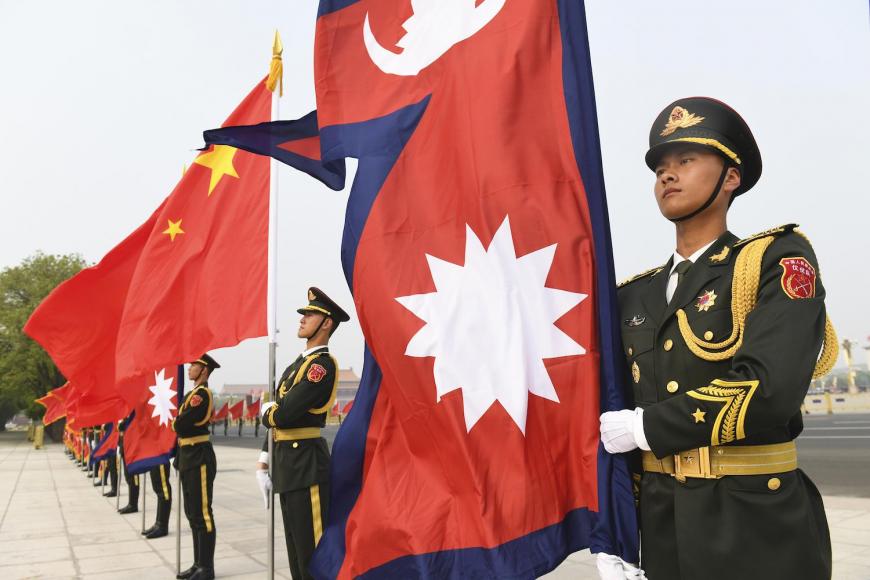New Delhi: Projects that are a part of China’s Belt and Road Initiative (BRI) and other investments across Nepal are facing significant resistance from the local population and informed citizens, as many believe that the Chinese lucrative promises of infrastructure development are now harming the Himalayan kingdom. Moreover, in view of the recent developments in Africa, where many countries have cancelled their contracts for Chinese projects, politicians and decision-makers are arguing that Nepal needs to take another look at the BRI, as, under the garb of cheap loans, BRI may lead to a debt trap which Kathmandu cannot withstand.
Rajendra Mahto, Nepal’s former Deputy Prime Minister and senior leader, told The Sunday Guardian from Kathmandu: “The BRI project is at an early stage. Before going ahead with the Belt and Road Initiative in Nepal, we have to think a lot. Wider consultation in the country, between various stakeholders and the common population is needed. Is the BRI useful for Nepal? How much is it helpful for the people? How will it impact our national and international relations? How will it impact India, our neighbour’s sentiments with whom Nepal shares a 1,800-km long border? We need to give special emphasis that Nepalese land should not be used against anyone before deciding on the BRI project. How will Nepalese population benefit from BRI? If it is not beneficial then we should not go ahead, if it is beneficial then it’s fine.”
The recent experience of the Budhi Gandaki hydro project, Nepal’s biggest ever hydropower project, had led to discomfort in the population as approximately 40,000 people have been adversely affected. The list of controversial and failing Chinese investments in Nepal is long. It is a widely accepted fact that China, under its BRI, is trying to review its age-old strategy formulated by Admiral Zheng, Chinese strategist of the 15th century. The crux of this controversial strategy was to get close to its neighbours and find new areas with the desire to establish domination over these countries in the long run.
Like the other 60 countries which joined the BRI network, in 2017, Nepal became the first country in South Asia to join it. China had promised investment worth $10 billion in the starting few years. But now people are realising that everything is not so hunky-dory as promised as far as Chinese projects are concerned. A senior leader of Nepali Congress who did not wish to be named said: “In 2011, China had promised to build Nepal’s biggest hydropower project, the Budhi Gandaki hydro project, which was to finish in 2022, but till now, the Chinese company has not started the construction. Interestingly, the company, China Gezhouba Group Corporation, was awarded the contract without a tender in September 2018, a decision that was opposed by many in Nepal, but then Prime Minister K.P. Sharma Oli’s love for China was such that he didn’t pay heed to anyone. The then Nepalese government persuaded the local population with a promise of higher compensation and resettlement, but all those promises went for a tailspin.” As per local media reports, most of the population is highly unsatisfied with the government’s decision. Meanwhile, the project has been termed financially unviable, because of the falling costs of other renewables.
The other aspect is that these mega Chinese projects have the potential to impact the environment adversely in the Himalayan country. As per a recent environmental impact assessment report, the reservoir will submerge 44 cremation grounds, 68 religious sites and 26 historic and cultural sites along with 2,000 hectares of forest holding, 3.5 million individual trees in 38 plant species, and 19 mammal species, apart from reptiles and birds that would include 15 protected species.
Likewise, the Government of Nepal has signed a multi-billion dollar loan under the BRI to operate railways from China to the northern hilly areas of Nepal. The Chinese government had also put forward a proposal to build the Kerung-Kathmandu railway, and a railway line from Sagarmatha to Kathmandu through a tunnel. This has two implications. On the one hand, China has burdened Nepal with a debt by providing loans for railway services, while on the other hand, these projects will lead to environmental degradation. The investments in these two railways cannot be supported by the Government of Nepal and neither the gross domestic product is capable of paying back such a huge loan amount. Even if these railway projects worth US$5 billion come into operation, China will benefit more than Nepal from them, and experts believe that it is a Chinese game to extract Nepal’s mineral wealth as there is a huge quantity of minerals in the region. With the growing realization of the trap, there are demands for a relook at Chinese investments. It is to be seen how the new ruling dispensation in Nepal reacts to it.

